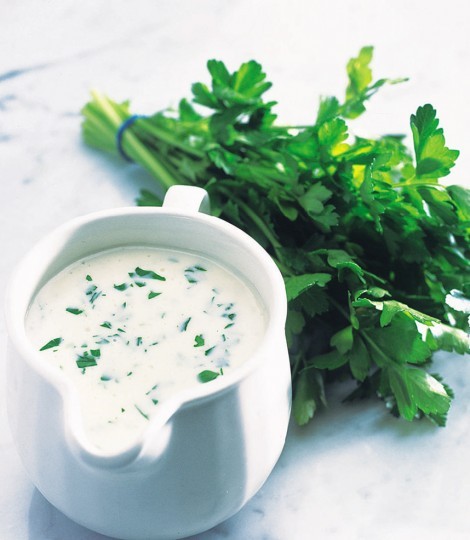Giving parsley its due
March 15, 2019 by DarcieFor years, I only knew parsley as a throwaway garnish found at the edge of the plate in small-town restaurants in the rural area where I grew up. It was only after I began exploring the world of cooking through cookbooks and websites that I discovered it had uses beyond an afterthought decoration. The herb is often overlooked in favor of more trendy items but you should not ignore it. Parsley has a glamorous side, as Fine Cooking explains by showing us the many ways we can put this ubiquitous herb to excellent use.

Parsley’s bright, clean but not too assertive flavor, combined with its vivid color, make it an excellent partner to many ingredients. In particular, it provides a nice contrast to the richness of cheese, and helps round out the flavor of pungent ingredients such as anchovies, capers, and olives. The flavor of the two main varieties available in most supermarkets (curly and flat leaf/Italian) is very similar, but the textures are different. Each has its best use: curly parsley works well in salads where it adds a bit of bulk, and flat leaf parsley is easier to chop. The variety is not critical, and you can substitute one for the other in almost any recipe.
In addition to providing tips on using parsley, the article offers advice on storing it (it keeps well) and growing it. Parlsey is quite hardy and in most temperate climates it will readily self-seed, making it a wonderful addition to almost any garden. Its deep green leaves blend well with many different types of plantings – I grow it between flowers to fill in bare spots while also providing plenty of parsley for my summer and fall cooking. Here are a few recipes that highlight the clean, fresh flavor of parsley:
- Parsley sauce from Delicious Magazine (UK) (pictured above)
- Caperberry and parsley salad from ABC Australia by Maggie Beer
- Pasta with chickpeas, celery and parsley from The Washington Post
- Orzo with peas and parsley pesto from The New York Times Cooking by Martha Rose Schulman
- Parsley gelato from Brooks Headley’s Fancy Desserts by Brooks Headley
Categories
- All Posts (6920)
- Antipasto (2122)
- Author Articles (247)
- Book News (934)
- Cookbook Giveaways (981)
- Cookbook Lovers (257)
- Cooking Tips (107)
- Culinary News (299)
- Food Biz People (552)
- Food Online (790)
- Holidays & Celebrations (272)
- New Cookbooks (149)
- Recipes (1497)
- Shelf Life With Susie (231)
- What's New on EYB (133)
Archives
Latest Comments
- BMeyer on Feasts of Good Fortune Cookbook Giveaway
- BMeyer on Heritage Cookies of the Mediterranean World – Cookbook Giveaway
- imnotyouranti on JoyFull – Cookbook Review & Giveaway
- fms95032 on Heritage Cookies of the Mediterranean World – Cookbook Giveaway
- Jennifer7 on German Heritage Baking Cookbook Giveaway
- Jenny on Best of the Best 2024
- Jennifer7 on Feasts of Good Fortune Cookbook Giveaway
- johnsonbeck on Best of the Best 2024
- luccio on Heritage Cookies of the Mediterranean World – Cookbook Giveaway
- johnsonbeck on Best of the Best 2024